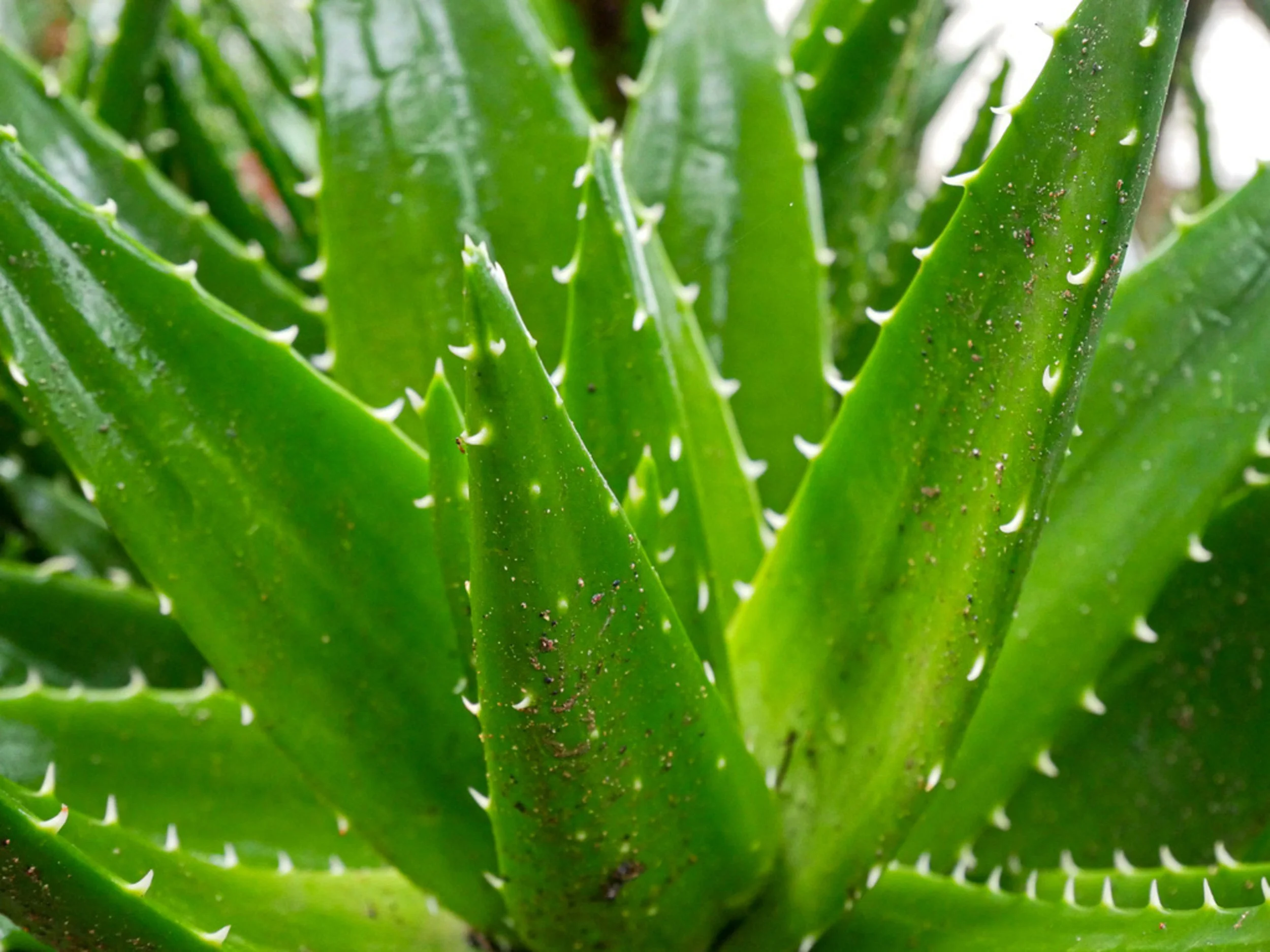Plant Profile: Aloe
How to Keep Aloe Alive Indoors (Yes, Even in Your NC Home)
From Outdoor Succulents to Indoor Vibes
So, you survived your first foray into succulent parenting. You’ve coaxed your hens and chicks into not dying, and your sedums aren’t melting in the summer heat—congrats, you’ve leveled up.
Now it’s time to bring the plant party inside.
Welcome to our new series all about indoor plant care for North Carolina gardeners. Whether you're looking to turn your home into a cozy jungle, or you just want something green that doesn’t scream for attention like your toddler (or your inbox), we’re diving into the houseplants that actually make sense for the NC lifestyle.
First up? Aloe. The cool, calming, medicinal MVP of the plant world—and arguably the easiest gateway to indoor plant obsession.
Meet Aloe: Your New (Low-Maintenance) Roommate
Aloe vera is one of those plants that has been around for ages—literally. Ancient Egyptians called it the “plant of immortality,” and honestly, they were onto something. This spiky, juicy little wonder isn’t just pretty. It’s useful, self-sufficient, and about as dramatic as a cardboard box.
If you’re in North Carolina, especially with all our humidity and light shifts, aloe makes a great indoor companion that won’t punish you for forgetting about it occasionally.
But don’t be fooled: While aloe is low-maintenance, it still needs a few things to truly thrive. So let’s break it down.
The NC Gardener’s Guide to Aloe Care Indoors
Light: Let the Sunshine In
Aloe needs bright, indirect sunlight. In NC homes, a south- or west-facing window is prime real estate for your new spiky friend. Morning sun? Perfect. Harsh all-day direct summer sun? Not so much—it’ll scorch those juicy leaves faster than you can say “sunscreen.”
If your aloe starts getting leggy or leaning toward the window like it’s trying to escape, it’s begging for more light. Move it closer or consider a grow light if you live in a cozy cave of a house.
Water: Less Is More
Repeat after me: Aloe is not thirsty. In fact, overwatering is the number one way to kill it. Think of aloe like that friend who only texts back once a month and still loves you.
Wait until the soil is completely dry before watering. In North Carolina’s humid climate, that might mean watering once every 2–3 weeks. In winter? Even less. And when you do water, give it a solid soak—then leave it alone.
Pro tip: Always water at the base. Wet leaves = mold = sadness.
Soil: Drainage or Bust
Aloe needs sandy, fast-draining soil. Regular potting mix holds too much moisture, which can lead to root rot. Use a cactus/succulent mix, or DIY your own with potting soil + sand or perlite.
Also, and I cannot stress this enough: your pot must have a drainage hole. Aloe is not here for your trendy, hole-less pottery. You want fashion and function.
Fertilizer: Optional, But Appreciated
Feed your aloe once in the spring and once in summer with a diluted succulent fertilizer. Don’t bother fertilizing in winter—it’s asleep, just like the rest of us are trying to be.
Aloe Emergencies (And How to Save the Day)
Mushy, Brown Leaves
You overwatered. Stop. Step away from the watering can. Trim damaged leaves and let the soil dry out completely before trying again.
Dry, Crispy Leaves
Too much direct sun or not enough water. Move it out of the direct sunbeam and give it a little drink (but not a flood).
Aloe Is Leaning
It’s reaching for the light. Rotate your pot every few days to help it grow evenly, or move it closer to a light source.
Can You Propagate Aloe Indoors?
Yes, you can—and it’s weirdly satisfying. Aloe makes baby plants (called pups) around its base. When they’re a few inches tall and have their own roots, gently remove them and repot. Boom. More aloe.
Give some away to friends or start an army of aloe on your windowsill. No judgment.
Bonus: How to Use Aloe Without Killing the Plant
We all know aloe gel is magical for burns and skincare. If you want to use your plant for its healing powers, here’s how to do it without committing planticide:
Snip a mature, outer leaf at the base.
Let the sap drain (it can be irritating).
Slice it open and scoop the gel.
Apply to your skin or store in the fridge for a day or two.
Don’t harvest too often, and let your plant recover between trimmings.
Why Aloe is Perfect for NC Gardeners
Even though this guide is about growing aloe indoors, North Carolina gardeners have some unique perks and pitfalls. Our homes often have big temperature swings and humidity shifts depending on the season. Aloe? It doesn’t care. It’s incredibly forgiving if you get the light and water balance right.
Plus, unlike some high-maintenance houseplants that demand filtered water and hourly affirmations, aloe just wants a sunny spot and to be left alone most of the time. It's the introvert of the plant world—and honestly, relatable.
Wrapping It Up: Aloe Today, Jungle Tomorrow
So there you have it. Aloe is the ultimate starter indoor plant for any NC gardener looking to bring a little green inside without going full fern jungle just yet.
Coming up in this series? We’ll explore other great indoor plants for North Carolina homes—like pothos, snake plants, and maybe even the drama queen herself: the fiddle leaf fig (if we’re feeling brave).
Until then, start simple. Start spiky. Start with aloe.



